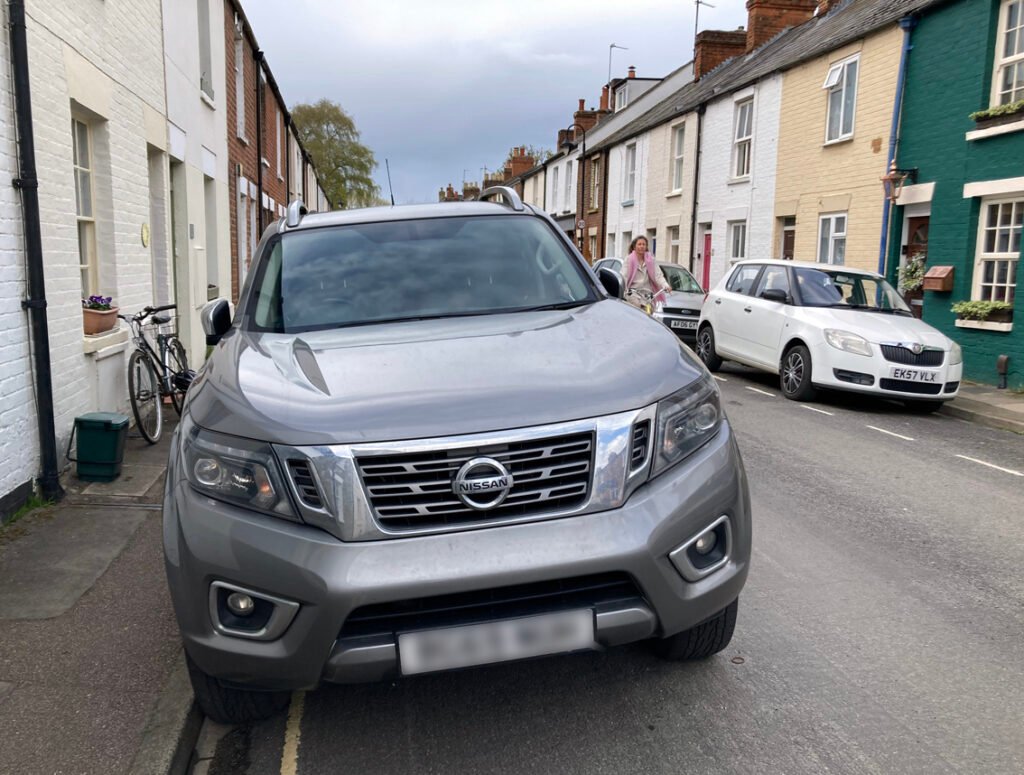Why weight-based parking charges make sense

By Danny Yee
Danny is a Cyclox member and sustainable transport activist. This is his address to the City Council on a recent motion about weight-based parking charges
Outside my front door is a stretch of on-street parking which can, if everyone parks carefully, just fit four small cars. But even one large car reduces its capacity to three.
Parking problems
Those of you who drive may have experienced finding a space in a car park that is difficult or impossible to use because there are wide vehicles on either side, coming right up to the dividing line. And car parks that might once have had 100 spaces may now only have 80, because they have to cater for wider cars. So charging larger vehicles more for parking would be justified simply on grounds of fairness. But larger vehicles also create a whole range of community harms. Pretty much all the harms created by cars are worse with larger and heavier cars.
In some places on-street parking has been shifted onto pavements because wider cars parked on the carriageway wouldn’t leave enough room for bin lorries or fire engines. This makes the footway hard to use for people walking or wheeling.
Damage to people and pavements
A child is eight times more likely to die in a collision with an SUV than with an ordinary car, because they go under the SUV rather than onto the bonnet of the car. And because larger vehicles have poor visibility they are more likely to hit children, especially when reversing. Larger vehicles also contribute to road danger indirectly, even when parked or stationary, because they block visibility, raising the risk of collisions between other people, whether walking, wheeling, cycling or driving.
Heavier vehicles cause more damage than lighter ones, both to the carriageway and to pavements. This is non-linear, and some analyses suggest the heaviest SUVs may do 20 times as much damage as a typical car.

Larger vehicles contribute to road danger even when parked because they block visibility
Air pollution
Particulate air pollution largely comes from tyre wear, road-dust resuspension, and brake wear. That means it is not solved by electrification, but also that larger vehicles create more of it. There is no safe level of particulate air pollution, which is why the World Health Organization guidelines are now 20% of the UK legal limits.
Finally, larger vehicles burn more fuel and emit more carbon dioxide. All the decarbonisation gains achieved by vehicle electrification have been undone by increasing vehicle size.
So we need to discourage the ownership and use of larger vehicles, especially in urban areas such as Oxford with large numbers of people walking, cycling and breathing the air. Increased parking charges would be a small but direct deterrent but would also, if accompanied by a suitable explanatory campaign, help change people’s car purchasing decisions.
Social equality
There is also a social equity side to this. The proposed Zero Emission Zone (ZEZ), for example, is progressive because the poorest residents of Oxford are most likely to depend on walking, cycling and buses. But it is regressive in so far as poorer drivers are less likely to have electric vehicles and more likely to have older vehicles with dirtier engines. In contrast, car weight correlates strongly with car price, so a weight-based component would make something like the ZEZ more progressive. It would also discourage the vehicles which contribute most to particulate pollution and road danger.
Many other local authorities have emissions-based charging and a few have size or weight-based charging. Oxford and Oxfordshire should follow them. Please support this motion.
Image credits
Jane Buekett
